Our sixth annual Priorities for Business Leaders survey, conducted in partnership with Bredin from July 3 to 19, 2024, highlights the strategic priorities reported by companies with 5-499 employees. The survey reveals that 85% of business leaders expect higher revenue over the next 12 months (up from 76% last year), and 50% plan to increase full-time employee headcount to support their growth objectives.
Additionally, many leaders are looking to outsource HR administration tasks by leveraging expert HR advice, technology, and HR tools to gain a competitive advantage, maintain data privacy, and enhance employee productivity.
Read on to discover the insights from our survey and consider how they can inform your business strategy in the coming months.
Strategic Business Risks Prevail
Business leaders shared they face multifaceted and high-impact challenges like economic uncertainty (86%), staying ahead of the competition (77%), and business growth (74%), which require strategic foresight and robust planning to navigate effectively.
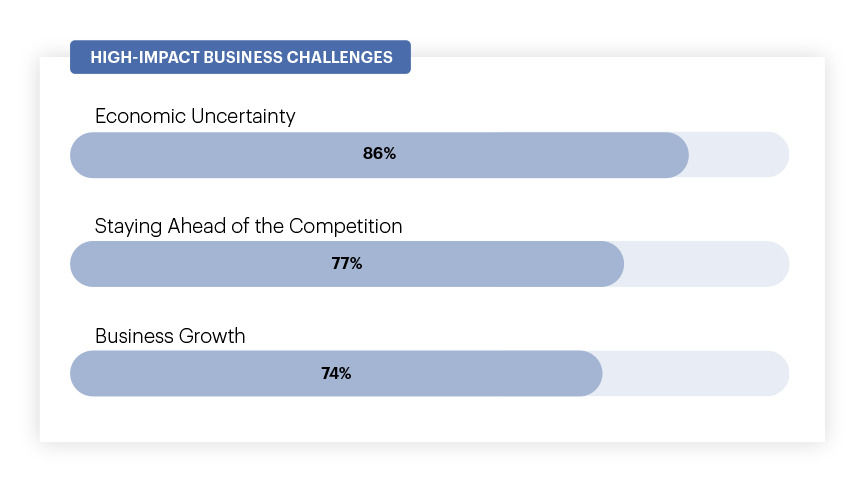
Regardless of company size, the most challenging business issue is economic uncertainty. However, businesses with 20-49 employees are also challenged with managing expenses and finances (76%), employers with 50-99 employees are also challenged with technological change (85%), and companies with 100-499 employees are also challenged with cyber security (77%).
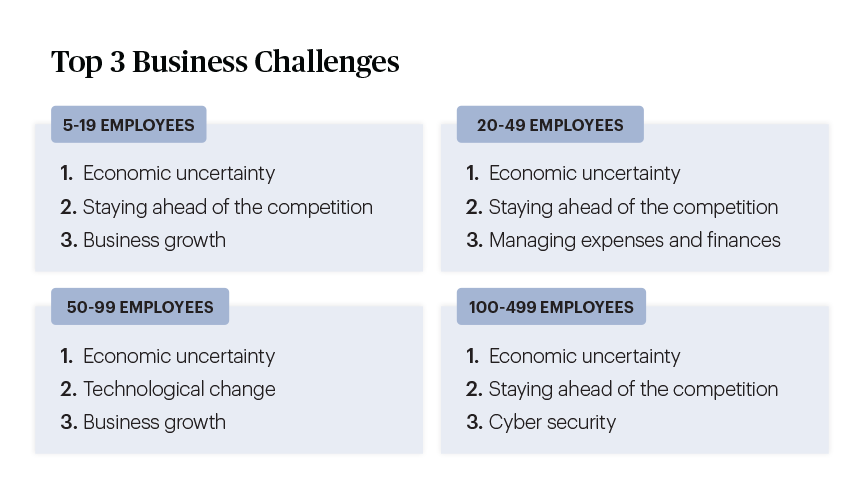
HR Challenges Persist
The top challenge leaders face related to HR matters is attracting and recruiting talent (57%). Leaders also shared that they are prioritizing employee mental health and wellbeing, as this was cited as the second top challenge (52%), followed by talent management (48%).
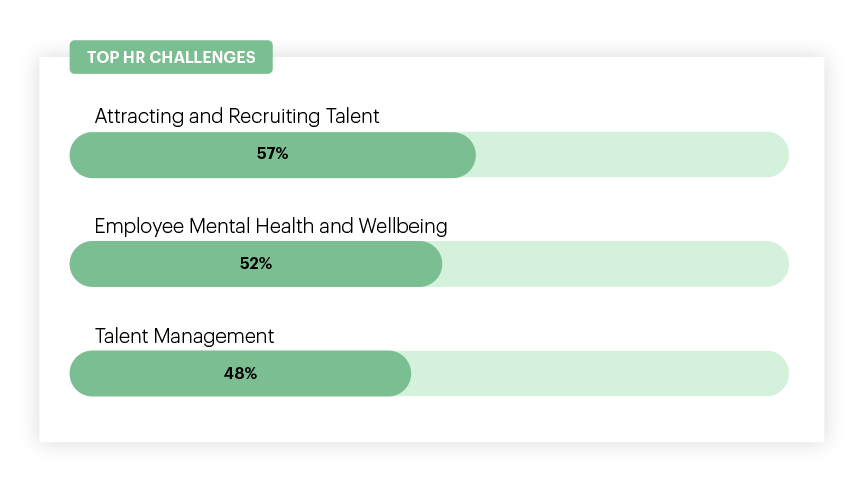
Again, there were some variations by company size, with companies employing 5-19 people also being challenged with managing employees of different generations (45%), companies with 20-49 employees and 100-499 employees challenged with managing/administering benefits (60%), and businesses with 50-99 employees also challenged with learning and development (65%).
Adding to HR complexities, the combination of high labor demand and new pay transparency laws are incentivizing companies to offer competitive salaries to attract and retain employees. This creates a challenging situation for HR leaders, as fair compensation is a top priority for 87% of U.S. workers in 2024. At the same time, businesses must manage rising costs in other areas, the pressure to increase profits, and the need to prepare for a potential economic downturn.1
Technology Obstacles on the Horizon
New this year, leaders referenced several challenges related to technology. The top obstacles to overcome were data security/employee data privacy (56%), which was the top priority consistent across most company sizes (except those with 50-99 employees), followed by managing analytics/reporting (55%) and the scalability/ability of HR system to grow with our company (53%).
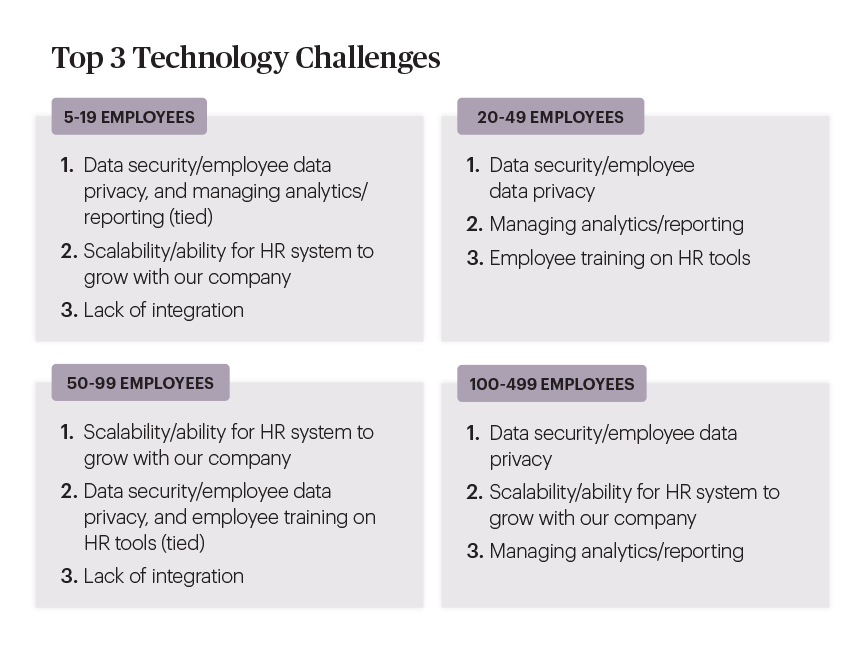
Leaders Home In on Employee Growth & Resilience
When it comes to people management, leaders are prioritizing several critical areas to ensure their organizations thrive. A significant 95% of leaders are focused on enhancing workforce productivity, recognizing that an efficient and effective workforce is vital to maintaining a competitive edge. Additionally, 93% of leaders emphasized performance management, understanding that regular evaluations and feedback are essential for continuous improvement and goal alignment. Further, 90% of leaders are concentrating on employee engagement, retention, and professional development, acknowledging that a motivated, committed, and prepared workforce is vital for long-term success and stability. These focus areas collectively highlight the strategic importance leaders place on optimizing their human resources strategies to drive organizational growth and resilience.
Investments in employee retention are being prioritized by focusing on tactics such as increasing pay (49%), improving benefits (41%), and offering flexible work schedules (40%). These priorities were consistent across companies of all sizes.
When looking to the year ahead, the number one priority leaders will focus on is supporting employees' physical, financial, and mental wellbeing (52%).
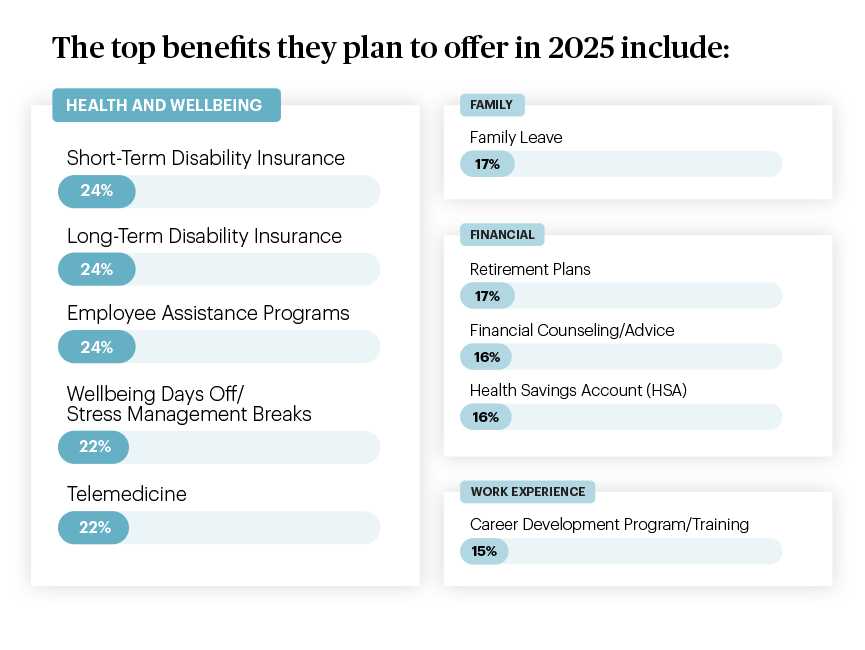
Employee Separations Come With a Cost
As many as 42% of leaders said their company had experienced voluntary separations (such as resignations) in the past 2 years, and 37% implemented involuntary separations (such as layoffs or termination for cause). When looking at separations by company size, larger companies with 100-499 employees experienced the most voluntary or involuntary separations in the past two years (72%).
On average, companies that lost employees from their workforce in the past two years due to either voluntary or involuntary separations experience an average cost of $9,379 per employee separation and as high as $12,408 for larger companies with 100 - 499 employees.

As a result of staff turnover, the businesses were mainly impacted by disruption to the team dynamic (45%) and productivity losses (45%), among other costs.
Uncovering the Costs of HR Administration
Spending time on HR administration tasks like processing payroll, administering benefits, and maintaining regulatory compliance takes up a lot of time and money for many companies. One-third (34%) of leaders spend more than 10 hours a week on HR administration tasks. The time spent on HR increases directionally with company size.
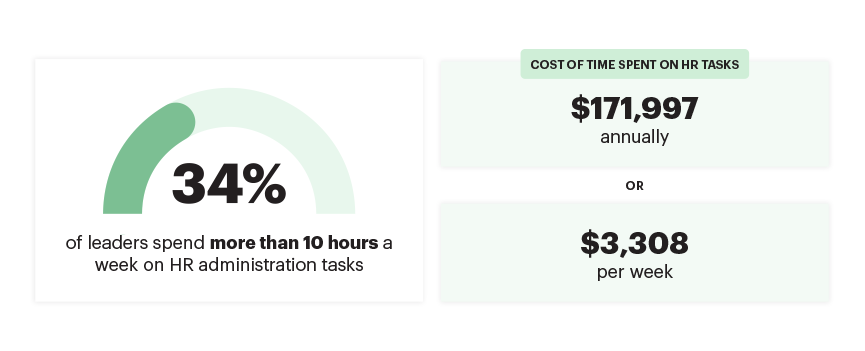
Time Spent On HR Admin By Company Size Per Week |
|---|
| | 5-19 Employees | 20-49 Employees | 50-99 Employees | 100-499 Employees |
| Under 5 Hours | 46% | 26% | 17% | 11% |
| 6-10 Hours | 23% | 32% | 29% | 22% |
| 11-15 Hours | 16% | 17% | 23% | 27% |
| 16-20 Hours | 7% | 11% | 16% | 15% |
| 20+ Hours | 7% | 13% | 14% | 23% |
On average, time spent on HR tasks costs companies $171,997 annually or $3,308 per week. For larger companies with 100-499 employees, this cost jumps to $413,804 annually, and $344,743 annually for companies with 50-99 employees.
Specifically, payroll processing, people management, and tracking employee hours take up the most time.
Maintaining Regulatory Compliance Comes With a Cost
We delved deeper this year into the challenges associated with maintaining regulatory compliance. On average, leaders spend 5.3 hours a month managing compliance with wage and hour laws. Further, complying with workplace safety laws takes an average of 5 hours a month.
Leaders find it the most challenging to maintain compliance with record-keeping and documentation (56%), followed by data privacy/protection (54%) and federal and state-mandated training (50%). The most time-consuming laws enforced by compliance rulings from regulators came from the Occupational Safety and Health Administration, the Equal Employment Opportunity Commission, and the Department of Labor.
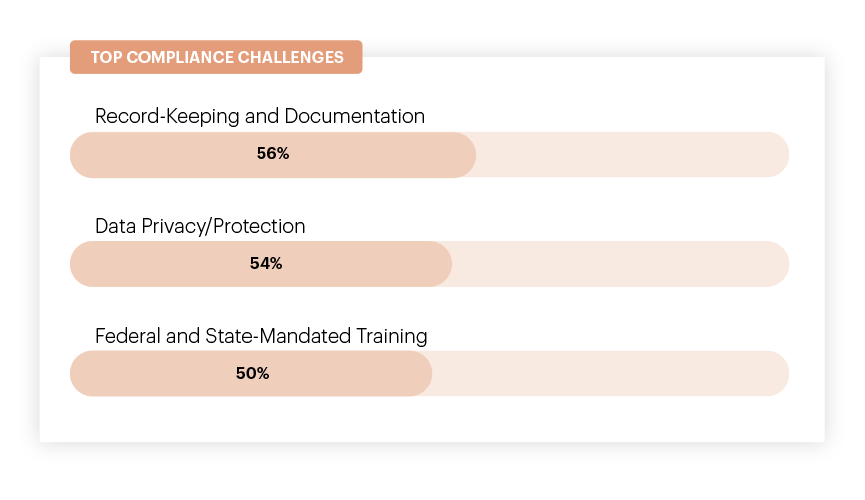
HR Outsourcing To Deliver Efficiencies
As many as 61% of leaders plan to outsource HR administration in the year ahead. The most pressing tasks to outsource include payroll processing, benefits administration, and recruiting and onboarding. Managing 401(k) administration was also recognized as a priority task to outsource for companies with 20-499 employees.
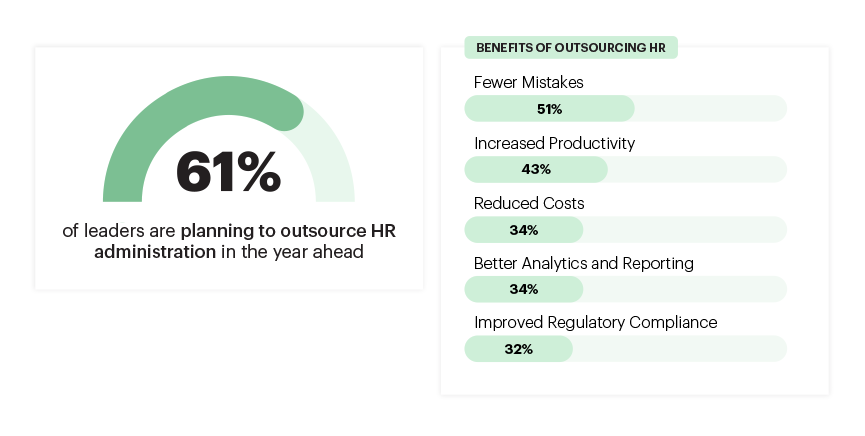
Expected benefits from outsourcing HR tasks include fewer mistakes (51%), increased productivity (43%), reduced costs (34%), better analytics and reporting (34%), and improved regulatory compliance (32%).
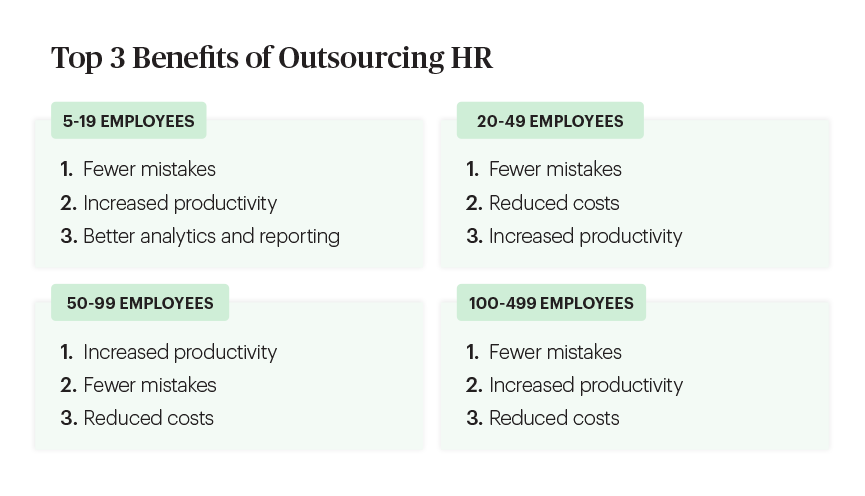
Business Growth & Efficiency Starts With Smart HR
In today's dynamic business environment, leaders have unprecedented access to tools, technology, and guidance designed to simplify HR processes, support teams, and seize new opportunities. Make the most of this exciting time by working with Paychex. Our expert HR advice and comprehensive tools make it easier to manage rising benefit costs and streamline time-consuming HR tasks. Paychex provides HR guidance and an all-in-one technology solution to help you tackle your challenges and achieve your priorities, from talent acquisition and retention to managing benefits, payroll, risk, and compliance.
1 EN_State of the Work Place Report-Executive Version-012024pdf.pdf (shrm.org)



















